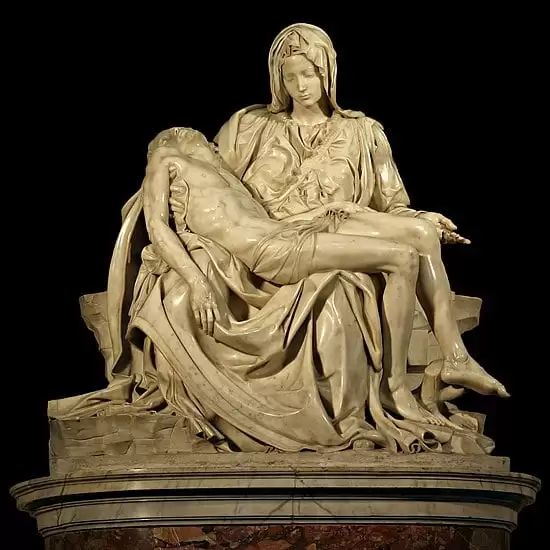This year at Phillips’ 20th Century and Contemporary Art Day Sale, a 1-of-3 edition of Sam Taylor-Johnson’s video Pietà sold for £22,500. The 2-minute film shows the artist, sat on a dark marble staircase, supporting a limp body substituting that of Christ in the archetypal, eponymous pose.
Sam Taylor-Johnson – Pietà
I was struck by how impactful I found the work emotionally, in comparison to the various Pietà images I had seen during my time studying Art History. You feel very aware of the weight of the body resting on the knees of the stand-in Virgin Mary. The body slumps toward the stairs despite the support from the maternal character and at 1:58 Taylor-Johnson rearranges her pose to continue to support the weight. This sense of weightiness to the Christ body reminds us of the age “reality” of Christ at the Lamentation and the Passion: The mother’s child is a grown man, the grown man is her child, and he is dead.
Pietà Luis de Morales
The majority of Pietà depictions focus on the wounds of the martyred Christ, with Michelangelo’s sculpture famously being an exception. Taylor-Johnson’s also deviates from this trend. The lack of overt religious reference (other than that implied by the pose) reminds us that what we are seeing is a scene of grief and physical struggle to support a loved one. It is rare that our focus and empathy is with the grieving parent in a Pietà. It feels relatable to modern life in a way that more explicit depictions of Virgin Mary and Jesus fail to be.
Museo diocesano di klagenfurt, pietà
As in Michelangelo’s work, the ‘Virgin’ figure and that of her son seem identical in age. For me, this shifts focus onto the maternal figure. It’s refreshing to see work reject the cultural trope that once a woman becomes a mother, her youth (and to some extent, her life) are over. Here we watch the strength of the mother support her adult child, and the emotional implications alone are enough to draw us away from demanding biological realism. I certainly prefer this reading to Michelangelo’s explanation of his youthful Mary: “Do you not know that chaste women stay fresh much more than those who are not chaste?”
Pietà (Michelangelo)
I’m a big believer in having opinions on art without research. There are, of course, various ways to read Taylor-Johnson’s Pieta, especially when examined under the lens of the artist’s biography. Taylor-Johnson’s parental relationships were unsteady: both parents had cast aside their parental responsibility for her by the time the artist was 15. By 2001, the artist had had her first child – 4 at the time of Pieta’s creation – and had overcome cancer twice since 1997. Biographical insight can inform different readings, but it is important for me to remember that I was overcome by the power of this piece long before I even knew it was Robert Downey Jr. she was cradling.
©2020 Art Plugged







